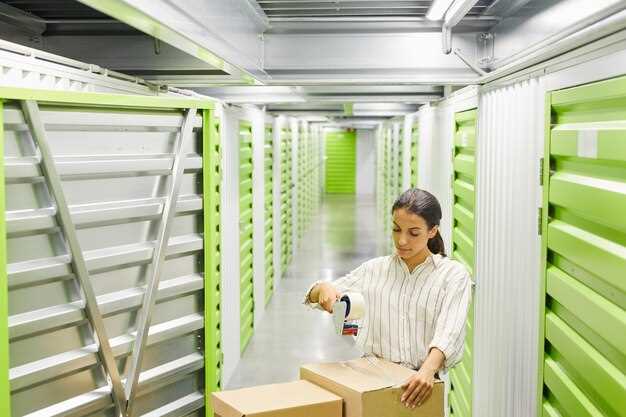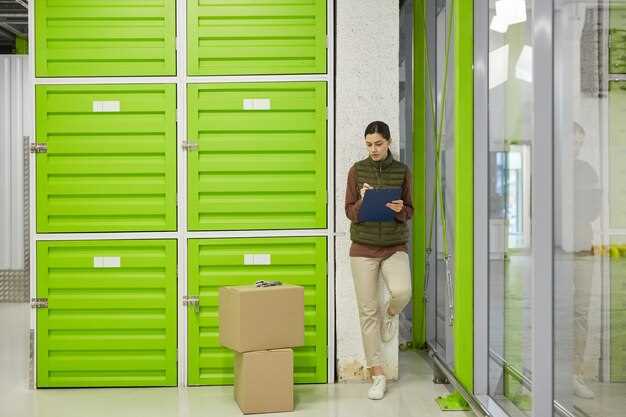
Climate-controlled storage has become an increasingly popular choice for individuals and businesses looking to preserve their valuable items. This type of storage not only regulates temperature but also controls humidity levels, creating an optimal environment for a variety of goods. With the capacity to protect against extreme conditions, climate-controlled facilities offer peace of mind for those concerned about the impact of climate on their possessions.
One of the most significant benefits of using climate control is the protection it provides against damage caused by heat, cold, and moisture. Items such as electronics, artwork, antiques, and important documents can deteriorate rapidly without appropriate conditions. By opting for climate-controlled storage, customers can safeguard their items from warping, cracking, or mold growth, ensuring their longevity and value remain intact.
However, the cost of climate-controlled storage can be a drawback for some. While providing superior protection, these facilities often come at a premium compared to standard storage options. It’s essential to weigh the costs against the benefits, considering the value of the items being stored and the potential expenses related to replacing or restoring them in case of damage. In this analysis, we will explore the various facets of climate-controlled storage, helping readers make informed decisions based on their specific needs and circumstances.
Energy Consumption and Its Impact on Operating Costs

The integration of climate-controlled storage facilities has become increasingly popular due to their ability to maintain optimal conditions for sensitive items. However, the associated energy consumption is a critical consideration that can significantly impact operating costs.
Climate-controlled systems utilize various technologies to regulate temperature and humidity levels, ensuring the preservation of stored items. While these systems are essential for safeguarding valuable products, they often require substantial electricity, leading to higher utility bills. For facilities aiming to minimize expenses, understanding the balance between necessary energy use and operational efficiency is crucial.
By implementing energy-efficient technologies, such as LED lighting, high-efficiency HVAC systems, and advanced insulation materials, storage facilities can reduce their overall energy consumption. This not only lowers operating costs but also minimizes the environmental footprint of the facility. Additionally, utilizing renewable energy sources, such as solar panels, can provide long-term savings and contribute to a sustainable operational model.
Moreover, the scheduling of climate control can be optimized to further reduce energy costs. For instance, storing less temperature-sensitive items during peak energy hours and utilizing off-peak hours for cooling can lead to significant financial savings. Regular maintenance of HVAC systems also plays a critical role in ensuring that energy is used effectively, preventing waste and extending the life of the equipment.
Ultimately, the energy consumption associated with climate-controlled storage is a key factor influencing operational costs. By adopting innovative technologies and energy-efficient practices, facilities can enhance their profitability while providing a safe environment for sensitive stored items.
Long-Term Preservation of Sensitive Items and Materials
Climate-controlled storage provides an essential solution for the long-term preservation of sensitive items and materials that are susceptible to degradation over time. The ability to precisely control temperature, humidity, and air quality minimizes the risk of damage from environmental factors. Items such as artworks, historical documents, photographs, and delicate fabrics benefit significantly from these controlled environments.
Maintaining stable conditions prevents issues such as mold growth, discoloration, and structural deterioration. For instance, artworks can warp or crack if exposed to fluctuating temperatures, while humidity can cause paper to become brittle or warp. By investing in climate-controlled storage, institutions and individuals ensure the longevity of their valuable or irreplaceable items.
Moreover, controlled storage environments can mitigate the effects of pollutants and pests that may compromise the integrity of materials. Air filters and pest management systems can be integrated into the storage facilities to further enhance protection. This proactive approach reduces the necessity for extensive restoration efforts, ultimately conserving both time and financial resources.
In summary, climate-controlled storage plays a vital role in preserving sensitive items and materials. It offers a safeguard against environmental damage while promoting the sustainability of collections for future generations.
Comparative Analysis of Climate-Controlled vs. Standard Storage Solutions

When evaluating storage options, the distinction between climate-controlled and standard storage solutions is crucial. Climate-controlled storage maintains consistent temperatures and humidity levels, which is essential for protecting sensitive items such as electronics, art, documents, and certain types of furniture. In contrast, standard storage units lack these environmental controls, making them more prone to fluctuations caused by external weather conditions.
One major benefit of climate-controlled storage is its ability to prevent damage from extreme temperatures. For example, high heat can cause electronics to malfunction or degrade, while excessive moisture can lead to mold growth and material deterioration. This makes climate-controlled units especially valuable for long-term storage of valuable or delicate items, where the cost of potential damage far outweighs the initial expense of renting a climate-controlled space.
On the other hand, standard storage solutions are typically more economical and accessible for general purposes. They are ideal for items that are not sensitive to environmental conditions, such as outdoor equipment, seasonal decorations, or frequently accessed belongings. The lower cost associated with standard units can be advantageous for customers looking for short-term, budget-friendly storage options.
Additionally, climate-controlled storage provides better peace of mind for customers concerned about the preservation of their belongings. With the knowledge that their items are being stored in an optimal environment, individuals and businesses can avoid the stress associated with potential damage. Conversely, the lack of such assurance in standard storage may lead to anxiety over the long-term condition of stored items.
Ultimately, the decision between climate-controlled and standard storage solutions should be guided by the type of items being stored, the duration of storage, and budget considerations. For sensitive belongings, climate-controlled storage is a prudent investment, while standard storage may suffice for more durable items. Conducting a thorough assessment of specific storage needs will ensure the right choice is made, thereby enhancing overall satisfaction and protection of stored goods.




